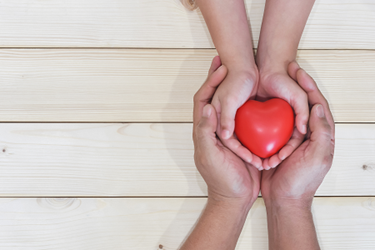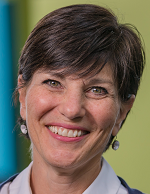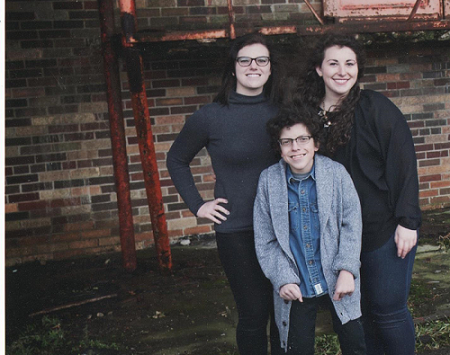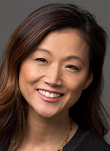Considering The Needs Of The Caregiver In Drug Development
By Michelle Berg, VP, Patient Affairs and Community Engagement, Abeona Therapeutics

There has been an increasing and requisite focus on the needs of individuals affected by chronic or life-limiting disease, which has in turn resulted in a focus on the development of possible interventions and how they are administered. The success of participation and retention of these patients in clinical research, advancement of the drug development process, and adherence post-commercialization require the involvement of another critical expert — the caregiver.
Through my role in leading our patient and community engagement efforts, I’ve had the opportunity to hear from many caregivers, mostly parents and other family members of children who are fighting devastating and cruel diseases such as Sanfilippo syndrome, epidermolysis bullosa, and Batten disease. The stories shared about the lengths caregivers must go to, the hopes they have for meaningful change, and the risk/benefit balance they consider have been instrumental in understanding the burden of disease and shaping research.
However, for the purposes of expressing the needs of the caregiver, I felt a more genuine pursuit was to have a true expert provide these insights. With that, what follows is a recent discussion I had with my colleague, Judy Doyle, community engagement specialist with Abeona and, more importantly, Jack Doyle’s mom. While some prepare for a career by studying or through years of work experience, Judy was dropped into her role as a rare disease advocate through a small mutation on the Ras pathway. What started out as a search for Jack’s diagnosis has led her on a 20-year journey of mentoring and educating others in the art of caregiving, advocating, and supporting medically fragile loved ones.
Michelle: I am grateful for your openness to talk about Jack and your family’s experiences. What can you share about how you first learned about his medical complexity?
 Judy: I always seem to start Jack’s story with when I was 16 weeks pregnant with him. Since I was 35 years old at the time and had experienced issues with a previous pregnancy, the obstetrician ordered a level II ultrasound with amniocentesis. During that ultrasound they discovered an increased amount of amniotic fluid and that something wasn’t right with his spine. They told me he had a hemivertebra [a type of vertebral anomaly that results from a lack of formation of one half of a vertebral body]. We had to wait 23 more weeks until he was born to find out if it was closed tube spina bifida — one of the possibilities — or something else. It was a hard time of uncertainty and forced patience.
Judy: I always seem to start Jack’s story with when I was 16 weeks pregnant with him. Since I was 35 years old at the time and had experienced issues with a previous pregnancy, the obstetrician ordered a level II ultrasound with amniocentesis. During that ultrasound they discovered an increased amount of amniotic fluid and that something wasn’t right with his spine. They told me he had a hemivertebra [a type of vertebral anomaly that results from a lack of formation of one half of a vertebral body]. We had to wait 23 more weeks until he was born to find out if it was closed tube spina bifida — one of the possibilities — or something else. It was a hard time of uncertainty and forced patience.
Michelle: That was 1998; surely healthcare was provided much differently than it is today. What services where you offered by the healthcare team after Jack was born?
Judy: It’s true; the state of medicine and patient care 20 years ago was indeed quite different, and so it was my job to figure things out. They told me the heart, kidneys, and spine form at the same time and I needed to find specialists for each of those to be ready to evaluate Jack after he arrived.
I remember them examining him after he was born and calling Jack an “FLK,” which I later found out meant “funny-looking kid,” an old-school term used to identify a child with a possible genetic anomaly. Thinking back, I suppose he did look a little funny, but I thought he was beautiful. He had a number of subtle physical characteristics that didn’t look right, but at the time I had no reason to know these meant anything collectively. I suppose it’s part of the learning process, little bits and clues released over time that allow you to get to acceptance. Like many, we had no idea what to expect and little information to go on.
When Jack was 6 weeks old, just he and I were driving home from church. He was screaming and crying inconsolably and then suddenly gasped, making such a strange sound. I was only a few seconds from home and when I got him out of the car seat he was white and limp. He started breathing right away, but we ended up taking him to our local children’s hospital to get him checked out. The doctors looked at every system in his body and found a variety of issues — more clues. We also saw a geneticist who pointed out some of the things that I had noticed soon after he was born. He told us that additively they were telling us something, we just didn’t know what; it was yet another difficult concept to grasp.
Michelle: For far too many, the path to attaining a definitive diagnosis is lengthy and wrought with misdirection. What can you share about receiving Jack’s diagnosis?
Judy: Our diagnostic journey was unfortunately typical and far too long — 3.5 years too long, in fact. While tackling each symptom that arose, we sought the opinions of multiple doctors at more than four clinics. All agreed there was something atypical about Jack but said, “Let’s see what he grows into,” “How about we give it another six months?,” or some other dismissive comment. Trying to find someone who would take interest in figuring out the source was so very hard. After yet another doctor told me we should come back in six months to see what happens, I asked him if that meant he would be thinking about my son during those six months. When he candidly answered no, I boldly stated, “I want you to carry my kid’s picture around and show it to your doctor friends and say, ‘Hey, do you have a patient who looks like this?’”
It was then that I realized I, the mom, had to drive the diagnostic process. So I took pictures of Jack’s hands and face and wrote down everything about his “funny” characteristics, what was known and what had been ruled out. I sent this summary out to at least a dozen genetic centers, hoping for someone to respond. Gratefully, Dr. John Opitz, a geneticist at the University of Utah, personally called me two weeks after receiving my letter and asked if we would bring Jack to see him. He thought at first that Jack had FG syndrome but then clinically diagnosed Jack with Cardiofaciocutaneous (CFC) syndrome. At that time, there were less than 200 children identified with CFC in the world.
Michelle: How did finally having the answer of CFC change things for you?
Judy: Looking back, I remember feeling like we had finally found our people, for whom we had been searching for so long. The emotion that came over me when I saw kids who shared Jack’s traits was beyond words in both a positive and overwhelming sense. I coped by thinking, “Oh that’s not going to be Jack,” or “Our outcome will be different,” — a mechanism I think many use. The diagnosis of CFC gave me something to fight against since I now had a name for the enemy. It also gave me credibility with others, proving it wasn’t just in my head or something he would grow out of — it was a real disease, thereby verifying everything else I had sensed was real.
After the diagnosis was in hand, we quickly came to realize nobody really knew much about CFC. The general practitioners would lob guesses at us like, “Oh, he’s never going to walk or talk,” while some would simply state, “I don’t know what’s going to happen.” I preferred those who were honest and would just acknowledge that they didn’t know. We knew this disease was life-limiting, but one of the difficulties with CFC is that there is no typical path, leaving us with no choice but to wake up and address each day based on what it presents to us. When Jack’s having seizures, seizures are the priority, or if he has debilitating headaches, we focus on that, and when he’s feeling good, we go with it. Learning from and being able to talk to other parents of kids with CFC was a major difference-maker and continues to be critical in getting through this.
Michelle: It’s not just the caregivers and individual who are affected. How did having a medically fragile child affect your family dynamic?
Judy: Jack’s older sisters, Sally and Madi (who were 3 and 5 years old, respectively, when he was born) adapted readily after he was born, not really grasping that Jack, and therefore our family, was on a unique path. I was fortunate to have already made the choice to stay home, which made the adjustment to having a child with special needs a smoother, less-stressful transition for the entire family. Madi wanted Jack to follow her directions, while Sally was more willing to let Jack be Jack and move at his pace, though both sacrificed while growing up with a sibling with special needs.

After two kids without such needs, I feel like my rhythm was off as Jack’s mom because there were no typical milestones to achieve or sync up with, such as sleeping through the night or even something as simple as being able to feed your baby. I remember when my husband and I hit that first-year mark after he was born — it was like a cloud had lifted. We were in this figure-it-out-and-fight mode that whole year, and so without realizing it, reaching Jack’s birthday allowed us to finally close out a milestone in some fashion. We concluded it wasn’t us or our marriage that weren’t working, but the situation we were handed. This was freeing in that we knew if we could work on things and get through them together, we would stay strong as a couple for our family.
Michelle: Even with a child who follows a typical development path, we all know it’s better with help. Whom did you turn to for support?
Judy: Sadly, yet not surprisingly, a number of relationships with friends and family changed pretty soon after we received Jack’s diagnosis, and after a while, some stopped asking how we were doing. We had to develop and grow our circle of support, something I always recommend to others new to the role of caregiver. You must put the family or person in the middle and look at the available resources, such as friends or acquaintances from church, neighborhood, school, etc., and think of someone from each area who connects with you or your family. They then altogether become your circle of support. These are the people who care about you and whom you can feel good about asking for help.
We also turned to our CFC community, through CFC International, for support because nobody understands like another walking your same path in such a rare disease. Back then, we had a LISTSERV and would email each other to stay in touch during the time between our every-other-year, in-person family conferences. More recently, social media has allowed us to connect with one another and share perspectives. One of my favorite things is to see photos from the families with children who have CFC that I’ve come to know from around the world. It’s great to see people and how they are living their life beyond the medical aspects.
Michelle: When engulfed in the care of another, it is easy to lose oneself. How did this adjustment in lifestyle change your view of yourself?
Judy: I have historically been a pretty independent and hard worker, whether it was at a job, parenting, or all the things that come with being successful in life. After my second daughter was 8 months old, I quit my job in marketing and transitioned into the role of stay-at-home mom. Once Jack came along it wasn’t much of a difference, but had I been involved in a career up to that point and was then forced into change, the impact would have been significant. Allowing myself to get to the point of bringing in a home nurse was a journey as well. It took a great amount of vulnerability to allow someone into our home to care for our medically fragile child, but at the same time I knew I had no choice. I felt like I was drowning in full view of everyone I knew.
Caregiving does give one a great sense of purpose. I feel powerful to have made my passion my career, whereas so many have made their career their passion. This is how I have been able to stay anchored in my independence and strength, by translating the challenges our family has faced into helping others.
Despite previous conversations and what I had already known about the caregiver perspective and specifically about Judy and her family, I still learned a considerable amount from this conversation, noting several key takeaways:
- Support for the caregiver has come a long way in two decades, yet still has a distance to go. These experts have insights that can facilitate research or translate to greater efficiency by homing in on what is meaningful.
- Those in medicine and research have the opportunity to engage their network to be a champion for the undiagnosed.
- Anyone can advocate for a caregiver by recognizing when help may be needed, but there is uncertainty about whom or how to ask for help.
- Caregivers should listen to their gut instincts, that voice that says something isn’t right, and not relent.
I’ll close by sharing one last insight from my late-night discussion with Judy about her experiences and expertise. She received a call at 10:40 p.m. from the service delivering Jack’s medications, asking if it was too late to deliver the critical cargo in half an hour. That would mean delivering it at 11:10 p.m. Judy, of course, said it was fine. To me, this underscored the bending and twisting caregivers are forced into to handle life with a medically fragile loved one and the importance of sharing about their needs. Please click here to learn more about CFC.
About The Author:
 Michelle Berg joined Abeona as VP of patient advocacy in 2015 and transitioned to VP of patient affairs and community engagement in 2017, bringing with her more than 17 years of experience in the gene and cell therapy, vaccine, gene editing, and molecular diagnostic fields. Her current role encompasses development and provision of information on rare disease, drug development, and gene therapy, and advocating for change and awareness of the impact on communities served through Abeona’s pipeline programs. Prior to Abeona, Berg was with Aldevron, a contract manufacturing organization specializing in biological reagents. She is a contributing author and speaker on patient-focused programming and rare disease advocacy.
Michelle Berg joined Abeona as VP of patient advocacy in 2015 and transitioned to VP of patient affairs and community engagement in 2017, bringing with her more than 17 years of experience in the gene and cell therapy, vaccine, gene editing, and molecular diagnostic fields. Her current role encompasses development and provision of information on rare disease, drug development, and gene therapy, and advocating for change and awareness of the impact on communities served through Abeona’s pipeline programs. Prior to Abeona, Berg was with Aldevron, a contract manufacturing organization specializing in biological reagents. She is a contributing author and speaker on patient-focused programming and rare disease advocacy.
